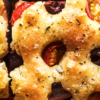Bread: The Staff of Life
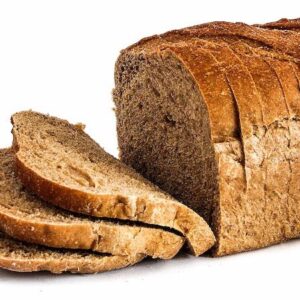
As a youth, my familiarity with bread consisted of three kinds—cornbread (our household staple), biscuits (my grandmother’s), and that mass produced, soft, white, sliced bread found on every grocer’s shelf that we used for sandwiches and morning toast. You know the kind I’m talking about. The kind Julia Childs was referring to when she said, “How can a nation be called great if its bread tastes like Kleenex?”
In my early years “artisan” bread was what my best friend’s mom made every day for the twelve years we were neighbors. And while I’m sure there were some small family-owned bakeries in my hometown that made Italian loaves and French baguettes, we were blue-collar country folks too poor to shop at bakeries. And supermarkets (even the largest) at that point in time had absolutely no inkling of including in-house bakery departments.
Of course, over the years things have changed. Even this small bedroom community where I currently live has several small independent bakeries and no less than five supermarket bakeries, each producing just about any type of bread you desire.
The First Bread
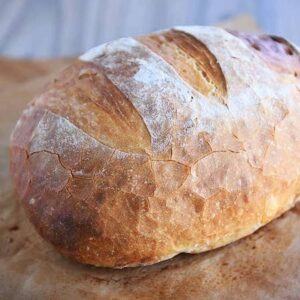 Bread is one of the oldest, most important, yet perhaps the most presumed foods in the world. In its simplest form, bread is wheat flour and water formed into a shaped dough and baked, usually in an oven, although it can also be cooked in a skillet or on a flat-top grill. It may be leavened with natures microbes (as in sourdough), baking powders or soda, or brewers yeast to lighten the bread. Or it can be unleavened, like tortillas and some flatbreads. Other additives may be incorporated in or on the dough to change the breads texture, color, or flavor.
Bread is one of the oldest, most important, yet perhaps the most presumed foods in the world. In its simplest form, bread is wheat flour and water formed into a shaped dough and baked, usually in an oven, although it can also be cooked in a skillet or on a flat-top grill. It may be leavened with natures microbes (as in sourdough), baking powders or soda, or brewers yeast to lighten the bread. Or it can be unleavened, like tortillas and some flatbreads. Other additives may be incorporated in or on the dough to change the breads texture, color, or flavor.
Ovens and grinding stones dating back some 30,000 years ago have been unearthed by archeologists in both Europe and Australia, leading some to believe that perhaps some kind of bread-making may have existed. However, no proof has been uncovered to substantiate the theory.
The oldest evidence we have of bread-making comes from a Shubayqa archaeological dig in Jordan’s Black Desert, where crumbs more than 14,000 years old were found of bread made by Natufian hunters-gatherers. These crumbs showed traces of wild wheat and barley, as well as plant roots, since cultivated grains lagged behind by several thousand years.
Yeast Breads
It is believed that the Sumerian’s in southern Mesopotamia were the first to discover sourdough, though the use of natural fermentation as leavening most likely came about by accident. Then sometime around 3000 BC in the Neolithic era, they passed their knowledge to the Egyptians who further refined the process, creating crusty loaves much like we have today. It was also the Egyptians who discovered that different grains could be used to make various types of bread.
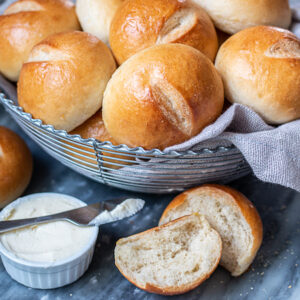 The Roman philosopher Pliny the Elder wrote that both the Gaul’s and Iberians made a “much lighter kind of bread than other peoples”, by using the form skimmed from beer as leavening. And in those parts of the world partial to wine instead of beer, a paste made from wine must and flour then allowed to ferment was used as a source of yeast.
The Roman philosopher Pliny the Elder wrote that both the Gaul’s and Iberians made a “much lighter kind of bread than other peoples”, by using the form skimmed from beer as leavening. And in those parts of the world partial to wine instead of beer, a paste made from wine must and flour then allowed to ferment was used as a source of yeast.
This may also be a good time to point out that the first free-standing ovens were built by the Ancient Greeks. Ovens that could be pre-heated and featured doors for easy access. By the 5th century BC, Greeks were producing bread in bakeries, as well as in homes. Three centuries later Greek bakers had taken their talents to Rome, where bread-baking became a commodity.
Roman bakers, using Greek engineering, built massive wood-fired ovens up to 20 feet in diameter, providing them the ability to produce up to 2,000 loaves daily. Many of these loaves were given away by Caesar in order to win and retain the loyalty of the citizenry. Roman bakers also introduced specialization, thereby providing a wide array of baked products.
The use of bread quickly spread throughout medieval Europe as the basis of their diet. And just as in Rome, the upper classes consumed light colored bread, while commoners were limited to the darker varieties.
The medieval bakers also produced large, thick bread rounds called “trenchers”, which were allowed to become stale and used as platters on which sauced meats were heaped and served. At the end of a meal, trenchers were sometimes eaten by the diners, but most commonly were given to the poor, or fed to the dogs. It has been expressed by some historians that pizza may have originated from trenchers. By the 15th century bread trenchers were replaced by wooden platers.
Bread in America
 Although legend has it that a small crock of sough dough starter was brought to the America’s with Christopher Columbus’ arrival in 1492, it seems the first European settlers actually embraced breads made from cornmeal, as wheat was not prevalent at first.
Although legend has it that a small crock of sough dough starter was brought to the America’s with Christopher Columbus’ arrival in 1492, it seems the first European settlers actually embraced breads made from cornmeal, as wheat was not prevalent at first.
America’s Indigenous people were drying, roasting, and grinding corn into meal for making bread, porridge and other uses long before the first settlers arrived. By introducing them to cornmeal, and teaching them on its use provided much needed sustenance during those first hash years in this new land. In fact, cornbread is probably one of America’s oldest foods.
Spanish explorers, several years before Columbus, brought wheat to Mexico in the early 1500s, where its cultivation eventually spread to the southwestern United States.
Then about a century later, in 1602, eighteen years before the Mayflower, the British sea captain Bartholomew planted North America’s first wheat crop in Massachusetts. Over the next one hundred years, wheat fields spread from Maryland north through the NewEngland states.
It would be some 350 years after Columbus landed that the first wheat crop was recorded. In 1839, wheat was harvested in what is now Johnson County, Kansas.
Industrialization
The industrial revolution in both the United States and Europe brought with it a number of major changes that affected how we farm and harvest our foods but also how it’s prepared and even how we eat it. Many tasks previously done by hand were now performed by machinery. And specialization became the key to production.
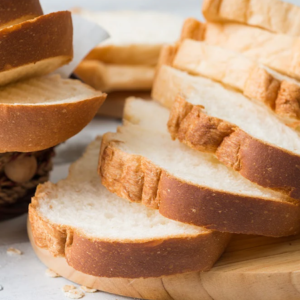 Improvements in milling rollers and techniques enabled manufacturers to make flour more consistent. That coupled with the development of dry active baker’s yeast made it possible to mass-produce bread that were uniform in color and texture.
Improvements in milling rollers and techniques enabled manufacturers to make flour more consistent. That coupled with the development of dry active baker’s yeast made it possible to mass-produce bread that were uniform in color and texture.
It was also during this period that wheat, rather than rye and barley, became the principle grain used in bread making, and new, improved sieves made from silk allowed the production of finer and whiter flour, which in turn made white bread more accessible. Today 70% of all bread eaten is white.
Technological advances in mining and metallurgy resulted in the use of tin pans in which to bake bread, both at home and commercially, rather than just cooking it on the ovens stone floor. This eventually led to the production of pullman or sandwich breads.
Probably one of the most life altering advancements in bread making was brought about by the Rohwedder bread-slicing machine. First invented in 1912 by the American inventor Otto Frederick Rohwedder. Then in 1917 a fire broke out in the building where Otto was constructing his prototype, destroying everything including the blueprints. Though it took several years for Rohwedder to secure new financing, in 1927 he successfully introduced a new machine that not only sliced the bread but wrapped it as well.
Sliced Bread
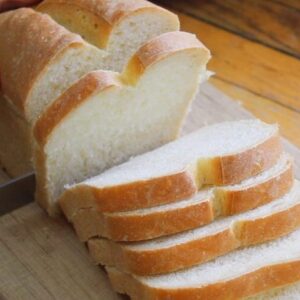 In 1928, Chillicothe Baking Company became the first major bakery to utilize Rohwedder’s new invention. Their new product, Kleen Maid Sliced Bread, was immediately touted in the Chillicothe Constitution-Tribune as “a thrill of pleasure . . . a refinement that will receive a hearty and permanent welcome.” And while there was some initial concern by customers as to how long pre-sliced bread would keep before becoming stale, their concerns were quickly eased after seeing the loaves were wrapped in wax paper. In fact, the pre-sliced bread was such a huge hit that Chillicothe Baking Company’s sales enjoyed a 2000% increase after just one week. And Rohwedder received more than 230 orders for his machine over the next twelve months. It seemed everyone wanted into the sliced bread game.
In 1928, Chillicothe Baking Company became the first major bakery to utilize Rohwedder’s new invention. Their new product, Kleen Maid Sliced Bread, was immediately touted in the Chillicothe Constitution-Tribune as “a thrill of pleasure . . . a refinement that will receive a hearty and permanent welcome.” And while there was some initial concern by customers as to how long pre-sliced bread would keep before becoming stale, their concerns were quickly eased after seeing the loaves were wrapped in wax paper. In fact, the pre-sliced bread was such a huge hit that Chillicothe Baking Company’s sales enjoyed a 2000% increase after just one week. And Rohwedder received more than 230 orders for his machine over the next twelve months. It seemed everyone wanted into the sliced bread game.
Two years later, in 1930, Taggart Baking Company introduced its signature sliced bread under the brand name, Wonder Bread. Their pillowy, squeezable, whiter-than-white bread quickly became a staple in households all across America.
Sliced Bread Ban
In 1943, the FDA made a highly controversial decision to ban sliced bread, citing concerns of diverted resources for wax paper used to wrap bread and the steel used to make slicing machinery from the war efforts of World War II. The consumers and manufacturers of sliced bread immediately began a major campaign opposing the ban, as carrying things too far.
The ban was lifted three months later with the government issuing a press release stating only that it had merely miscalculated the demand for wax paper.
Modern Bread
As bread-making technologies continued to advance, not everyone agrees that they enhance breads quality. For example: Because sliced bread tends to dry out quickly, bakers started to add chemicals to prevent it. And in 1942, the U.S. Army attempted provide soldiers more a nutritious bread by recommending the addition of thiamin, niacin, riboflavin, and iron to the flour, giving birth to enriched flours and even more chemicals.
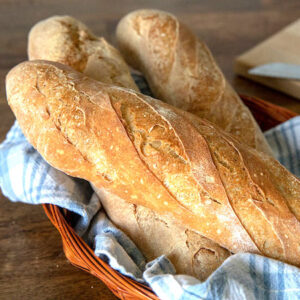 In the early 1960s, a new process was introduced for producing bread faster and more economically—the Chorleywood Bread Process (CBP). This system, developed n England and quickly adopted by a number of other countries including the United States, allows the use of lower-protein wheat varieties and reduces the processing time down to about three and a half hours from flour to slicing and packaging. To do this vitamin C, emulsifiers, and enzymes are added to the flour yeast, and fat, then quickly worked by high-speed mixers, producing a soft, pale, and tasteless bread for which the America has become famous.
In the early 1960s, a new process was introduced for producing bread faster and more economically—the Chorleywood Bread Process (CBP). This system, developed n England and quickly adopted by a number of other countries including the United States, allows the use of lower-protein wheat varieties and reduces the processing time down to about three and a half hours from flour to slicing and packaging. To do this vitamin C, emulsifiers, and enzymes are added to the flour yeast, and fat, then quickly worked by high-speed mixers, producing a soft, pale, and tasteless bread for which the America has become famous.
In recent years, baking and specifically bread-baking, has come full circle, especially since the 2020 covid pandemic. Consumers have become more health conscious, leading once again to a demand for “artisan” breads, produced primarily by small independent bakers, as well as a few supermarket bakeries.
One way to get truly healthy and delicious bread is to make it yourself. By using a sourdough starter rather than commercial yeast and using whole grain flour, you can make bread that is truly nutritious and tasteful. And homemade sourdough is less expensive, will stay fresh longer, taste better than any supermarket bread.
So important to us is bread that the very word is synonymous with a number of our expressions of sustenance — “breadwinner,” “putting bread on the table,” “the greatest thing since sliced bread,” and even in our prayers, “our daily bread.”
Bread has been, is, and will continue to be, an integral part of our society.



